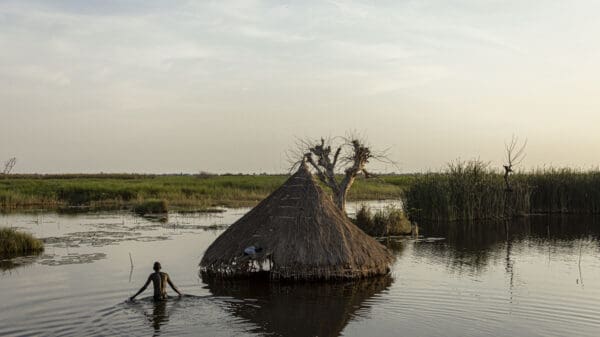How to Help South Sudan: Surviving on the Frontlines of the Climate Crisis
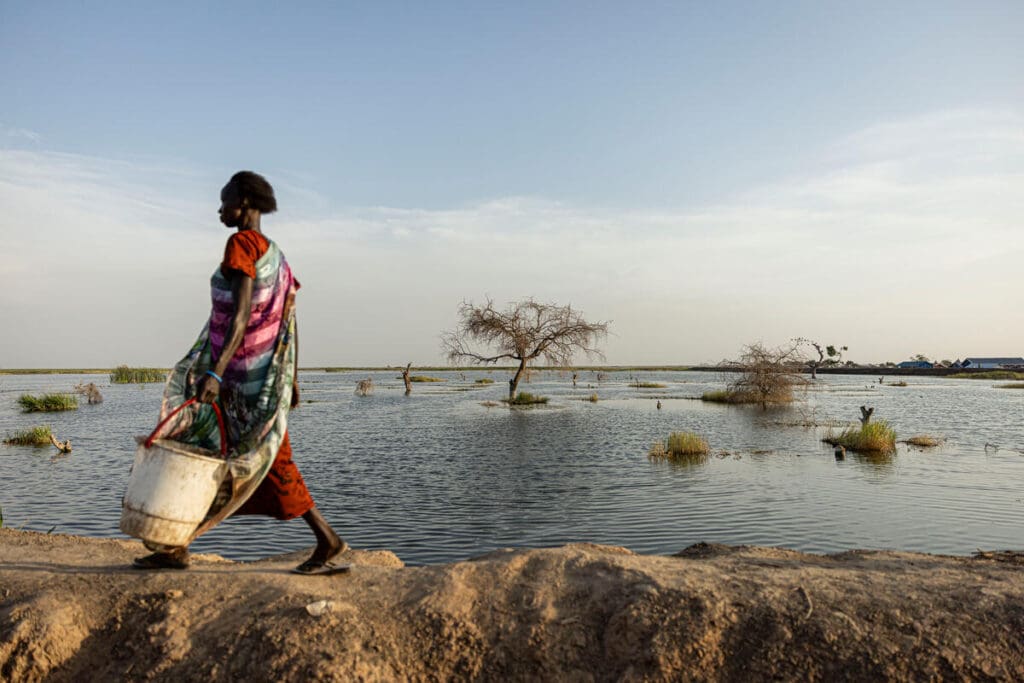
Last April, David Muir and his team from ABC World News Tonight showed viewers the devastating impacts of the climate crisis in South Sudan. ABC’s World News Tonight with David Muir, ABC’s Good Morning America and ABC’s Nightline prompted an outpouring of generous donations from 45,000 people who gave in support of the people of South Sudan.
South Sudan is suffering from historic, overlapping drought and floods caused by the climate crisis, and ABC’s reporting is must-watch TV for understanding the human toll it’s taken. The United Nations World Food Programme (WFP) understands this better than anyone, and that’s why we’re on the ground delivering food and long-term solutions to over 5 million people in South Sudan.
Here’s how you can support our work and the people of South Sudan:
Why Are There Natural Disasters in South Sudan?
Climate extremes are causing erratic weather patterns in Sub-Saharan Africa: Droughts, floods and storms are more frequent and intense than ever before. South Sudan is on the frontlines of this climate crisis, and millions of its people are living with the gruesome daily reality.
South Sudan is heating up twice as fast as the global average rate, which is causing widespread drought and years of flooding. It’s a double-edged sword of drowning and drying that’s made life for farming and pastoralist communities nearly impossible since 2019. Too much rain in some regions and not enough in others has hindered their ability to grow food and raise animals.
The country’s wetlands, known as The Sudd, have permanently expanded into surrounding farmlands and pastures, thereby drowning crops, killing livestock en masse and forcing millions of people from their homes.
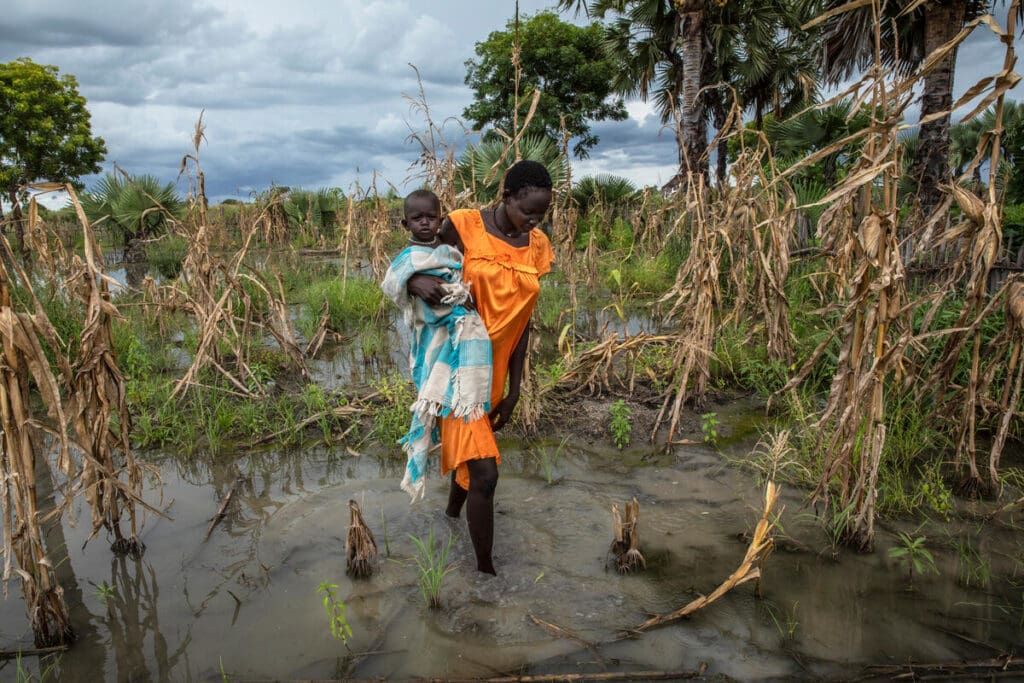
Nyaruan and her one-year-old son Chuong walk through their corn plantation destroyed by the floods. “We planted corn in June but in July, everything was under the water. We lost all the crops.”
Frequent flood zone surveys in the worst-hit parts of South Sudan have made one thing clear: The waters are not receding. At least not fast enough for the land to dry out, for waterlogged crops to recover or for displaced families to return to their homes.
The outbreak of conflict in the neighboring Sudan has exacerbated the hunger crisis in South Sudan. Hunger and malnutrition amongst people crossing the border are rising. Families are choosing between risking their lives in conflict-affected Sudan or running towards the humanitarian catastrophe in South Sudan.
Learn more about South Sudan >
How Is Global Warming Affecting Hunger in South Sudan?
Over half of South Sudan’s population (7.1 million people) is experiencing acute hunger. The consequences of inaction in South Sudan will be measured in the loss of lives and livelihoods on an unconscionable scale.
These are the 10 hungriest countries in the world >
“South Sudan is on the frontlines of the climate crisis and day in, day out families are losing their homes, cattle, fields and hope to extreme weather. Without humanitarian food assistance, millions more will find themselves in an increasingly dire situation and unable to provide even the most basic food for their families,” warned Makena Walker, acting country director for the U.N. World Food Programme in South Sudan, in 2023.
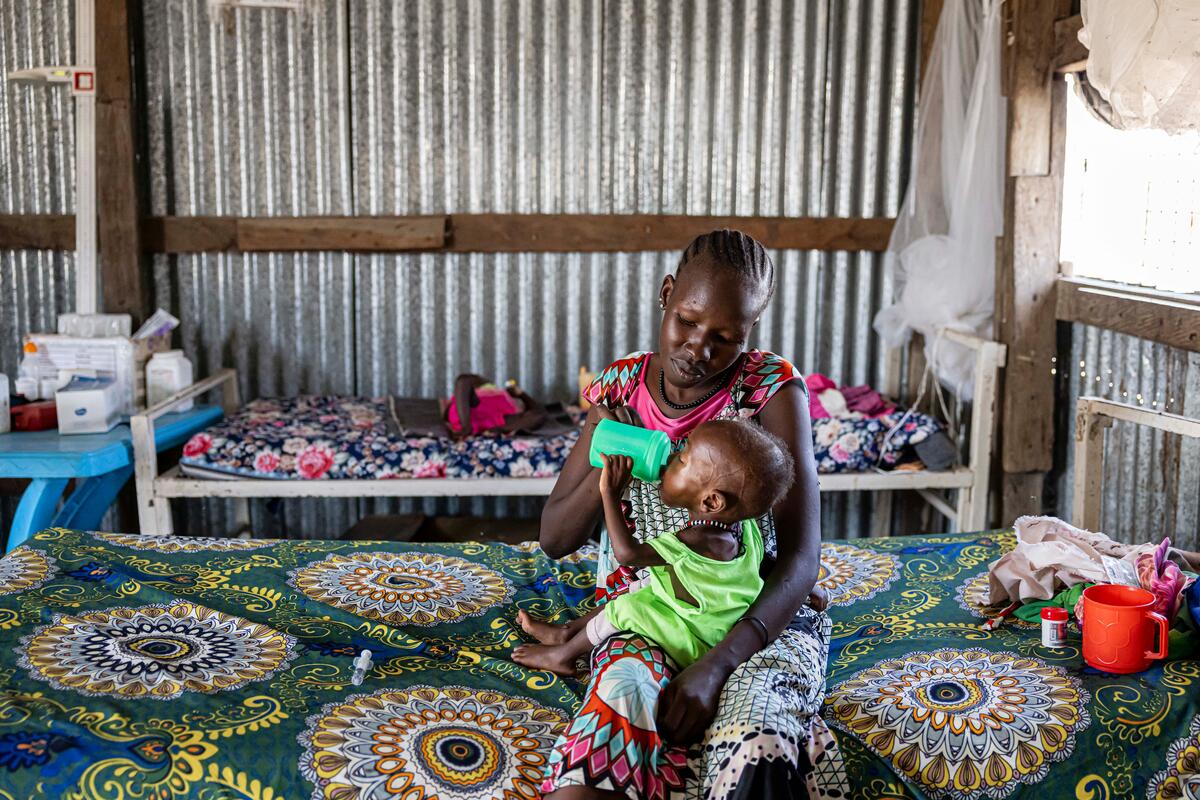
Nachak Kuol feeds her malnourished baby Rewde Tap. The climate crisis is driving malnutrition to unprecedented levels in some parts of South Sudan.
Who Is Suffering Most from Climate Extremes in South Sudan?
Rural communities in South Sudan are the most impacted by climate extremes, and more than three-quarters of the country’s population live outside urban centers. During the normal rainy season, most of the roads, especially in rural areas, are completely impassable. But when flooding occurs, the situation worsens and these communities become even more isolated. As a result children can’t get to school, people can’t get to work and food aid can’t be delivered.
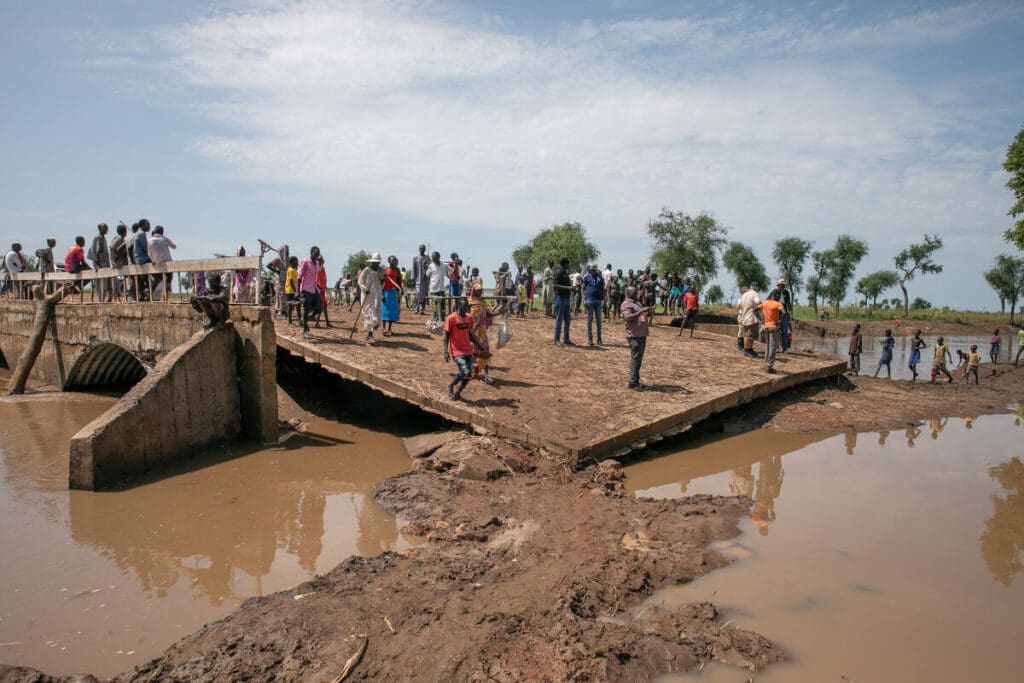
Roads and bridges connecting different towns and refugee camps have been blocked by the floods, cutting off essential supply routes and disrupting local markets.
Extreme weather also has an outsized effect on farmers and their ability to produce food. The harvests lost in South Sudan due to massive floods would have fed people for up to eight months. Instead, acres upon acres of crops were destroyed time and time again.
Learn more about climate change and hunger >
The devastating effect on families’ livelihoods can last generations. Those without the means to cope with climate extremes will face the greatest burden.
What Are the Needs in After a Weather Disaster?
Most urgently, people need food and safe drinking water. In any emergency situation, hunger and hydration are the most pressing needs.
On top of meeting these immediate needs, people in South Sudan need the tools, training and resources to adapt to the climate crisis. We must support family farmers who live off the land.
How Can People Be More Climate Resilient?
In the immediate aftermath of disasters like floods, the U.N. World Food Programme delivers food to survivors as quickly as possible – typically within 72 hours.
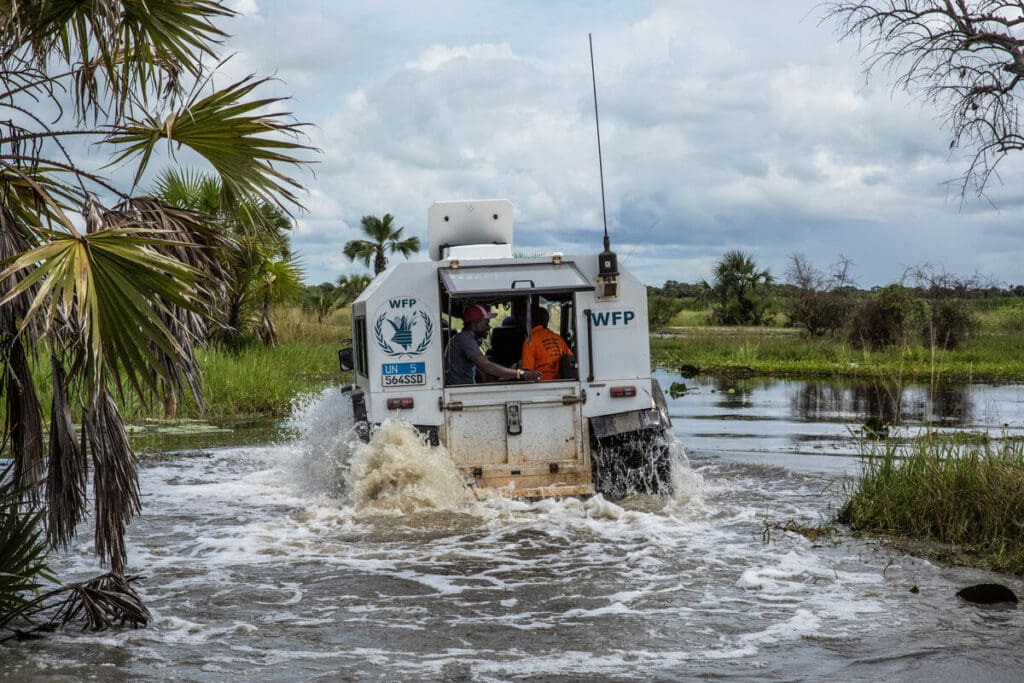
A WFP ATV crosses flooded areas in South Sudan. WFP does whatever it takes to reach flood survivors in with critical aid.
In addition to emergency food aid, the U.N. World Food Programme is helping communities withstand future extreme weather events by helping to build protective dikes around areas at risk of flooding and working alongside the people we serve to salvage roads and arterial travel routes.
While training participants to build infrastructure like roads, dams, ponds and irrigation systems, we also provide them with food through our Food for Assets program. This skills-centered approach has additional benefits like promoting nutrition, gender equality and social cohesion. For example, having a reliable water source can prevent clashes between pastoralists and landowners.
While tremendous challenges lie ahead as vast swathes of land remain waterlogged and hundreds of thousands of people remain displaced, the U.N. World Food Programme is working hard to meet immediate needs while developing long-term sustainable solutions.
How Can I Help People in South Sudan?
Extreme flooding caused by climate change is hurting communities in South Sudan, but with your help, we can deliver food directly relief and build resilience in South Sudan.
Your donation will be used directly to meet the needs of people bearing the brunt of the climate crisis. You can help save a life and make a long-lasting impact for decades to come.



